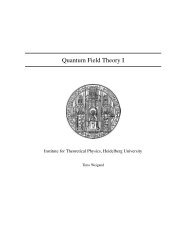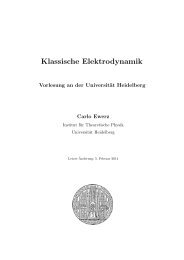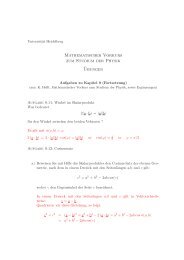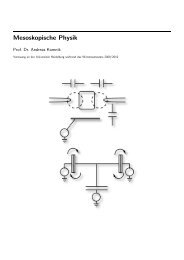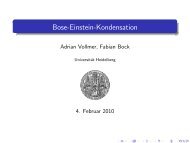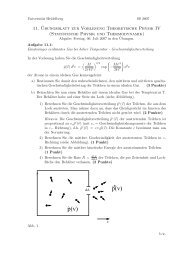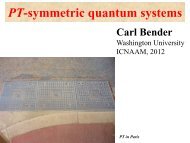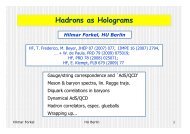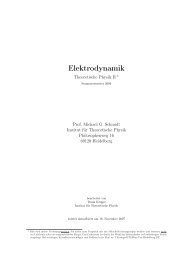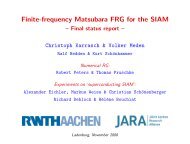Turbulence and Bose Condensation - Institut für Theoretische ...
Turbulence and Bose Condensation - Institut für Theoretische ...
Turbulence and Bose Condensation - Institut für Theoretische ...
Create successful ePaper yourself
Turn your PDF publications into a flip-book with our unique Google optimized e-Paper software.
medium is investigated within the framework of fluid dynamics. For a non-vortical<br />
fluid, especially, a generalized wave equation is derived for the (scalar) potential<br />
of the fluid velocity distribution in dependence of the equilibrium mass density<br />
of the fluid <strong>and</strong> the sound wave velocity. A solution of this equation for a finite<br />
transition period in terms of the hypergeometric function is determined for a phenomenologically<br />
realistic, sigmoidal change of the mass density <strong>and</strong> sound wave<br />
velocity. Using this solution, it is shown that the energy flux of the sound wave is<br />
not conserved but increases always for the propagation through a non-stationary<br />
medium, independent of whether the equilibrium mass density is increased or<br />
decreased. It is found, moreover, that this amplification of the transmitted wave<br />
arises from an energy exchange with the medium <strong>and</strong> that its flux is equal to<br />
the (total) flux of the incident <strong>and</strong> reflected wave. An interpretation of the reflected<br />
wave as a propagation of sound backward in time is given in close analogy<br />
to Feynman <strong>and</strong> Stueckelberg for the propagation of anti-particles. The reflection<br />
<strong>and</strong> transmission coefficients of sound propagating through a non-stationary<br />
medium is analyzed in more detail for hypersonic waves with transition periods<br />
between 15-200 ps as well as the transformation of infrasound waves in nonstationary<br />
oceans.<br />
Thermalization induced by chaotic behavior in<br />
classical Yang-Mills dynamics with the initial<br />
condition of color-glass condensate<br />
Hideaki Iida<br />
Department of Physics, Kyoto University, Kitashirakawa Oiwakecho, Kyoto<br />
606-8502, Japan<br />
Possible thermalization mechanism in heavy-ion collisions is explored in classical<br />
Yang-Mills (CYM) theory with the initial condition of color-glass condensate<br />
with noise varied. We calculate the Lyapunov exponents <strong>and</strong> show that even<br />
a tiny noise triggers instability of the system <strong>and</strong> then a chaotic behavior sets<br />
in as described by the positive Lyapunov exponents, or Kolmogorov-Sinai (K-S)<br />
entropy, which would take a saturate value after a characteristic time dependent<br />
on the ratio of strengths of the noise to the back ground coherent fields. Thus<br />
33



